Ask a question, get an answer ASAP!
GET A QUOTE
Tire Rotation Cost
Service Location
Upfront, Transparent Price
(1,055)You know that tires are an important part of your vehicle and you can’t get anywhere without them. However, there is a lot more to this component on your vehicle than you may realize.
When you go to purchase a new tire, you must provide a set of numbers and letters if you want an exact match. However, many people don’t know what all or part of the set means. Each portion of these numbers and letters is important to your specific tire.
Class of tire: The first letter indicates what class of vehicle you have. For instance, a “P” indicates a passenger car while “LT” indicates that it is a tire for a light truck.
Section width: The first set of numbers is usually three numbers and measures the width of the tire in millimeters from one sidewall to the other. It will say something like “185” or “245.”
Aspect ratio: After a backward slash, you will have a set of two numbers. This number refers to the height of the sidewall of the tire. It is a percentage of the previous number. For example, you might see a 45, which indicates that the height is 45% of the width of the tire.
Speed rating: This is a letter rather than a number because it provides a classification rather than an exact speed to indicate the maximum speed you can travel on the tire. Z is the highest rating.
Construction: The next letter indicates what type of tire you have. An “R” indicates that it is a radial tire, which means that it contains multiple layers of fabric with additional layers provided around the circumference to strengthen the tire. Radial tires are the most common for automobiles. You may also see a “B” for bias belt or “D” for diagonal.
Wheel diameter: The next number tells you what size wheel the tire will fit. Common numbers include 15 or 16 for cars, 16-18 for SUVs and 20 or higher for many trucks. The size is measured in inches.
Common numbers include 15 or 16 for cars, 16-18 for SUVs and 20 or higher for many trucks. The size is measured in inches.
Load index: This tells you how much weight the tire can bear. It is important to use tires that can handle the required weight.
Speed rating: This letter tells you how many miles per hour you can travel on the tire.
The diameter of your tire is important because it impacts your vehicle’s traction and stability. Generally, a wider tire will be more stable than one that is narrow. Bigger tires are more susceptible to damage than one that has a smaller size. Tires with shorter sidewalls can create a rougher ride, while the longer sidewalls will enhance your comfort as you travel. For most people, it is a combination of performance and comfort that makes them select a specific size of tire.
The tread or rubber that you see on a tire is only a portion of what makes up the tire.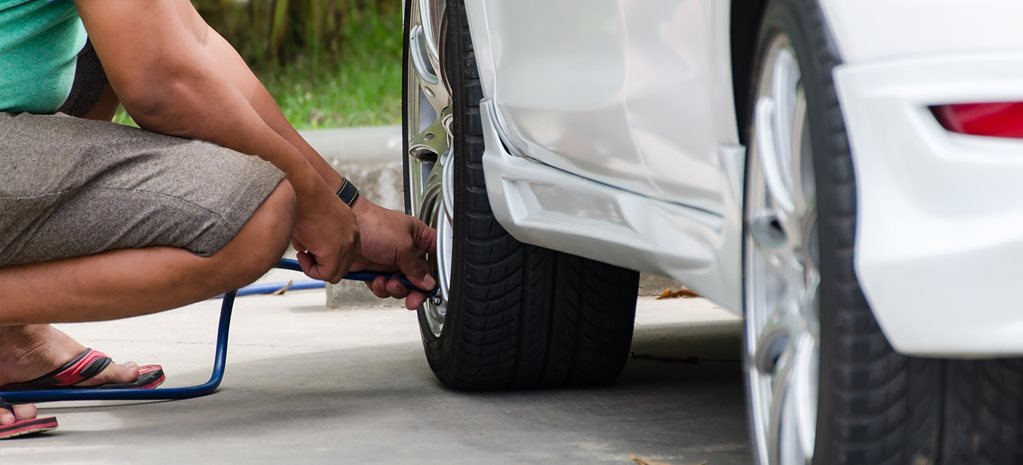 Many other components are hidden beneath this covering.
Many other components are hidden beneath this covering.
Bead: The bead consists of steel cable that is coated with rubber, it holds the tire in place on the rim and handles the force needed for installation.
Body: This consists of multiple layers with different fabrics also known as plies. The number of plies a tire has directly relates to how strong the tire is. An average car tire will have two plies. The most common fabric used in vehicles today is polyester cord and coated with rubber to bond with the rest of the components of the tire. When these plies run perpendicular to the tread, they are known as radial. Diagonal bias tires have plies that run at an angle.
Belts: Not all tires are belted, but those that do have steel belts located under the tread to provide reinforcement. They help prevent punctures and help ensure the most contact with the road for added stability.
Cap plies: These are seen on some vehicles to hold other components in place, most often seen in high performance tires.
Sidewall: This component provides the stability for the lateral portion of the tire and protects the body to keep air from escaping.
Tread: The outer layer of the tire, which is created from multiple types of natural as well as synthetic rubber; it starts out smooth until patterns are created. When the components are put together, the tread pattern is created. The depth of the tread impacts the capability of the tire. A tire with a deeper tread pattern has a stronger grip, especially in soft surfaces. A shallow tread pattern provides faster performance but takes away the grip needed for traction. This is why racing tires are illegal on most roads.
Car tires may be designed to be all-season or seasonal. Seasonal tires are developed based on road conditions most often seen in that season. For instance, winter tires are designed to handle snow and ice while summer tires are better on dry pavement.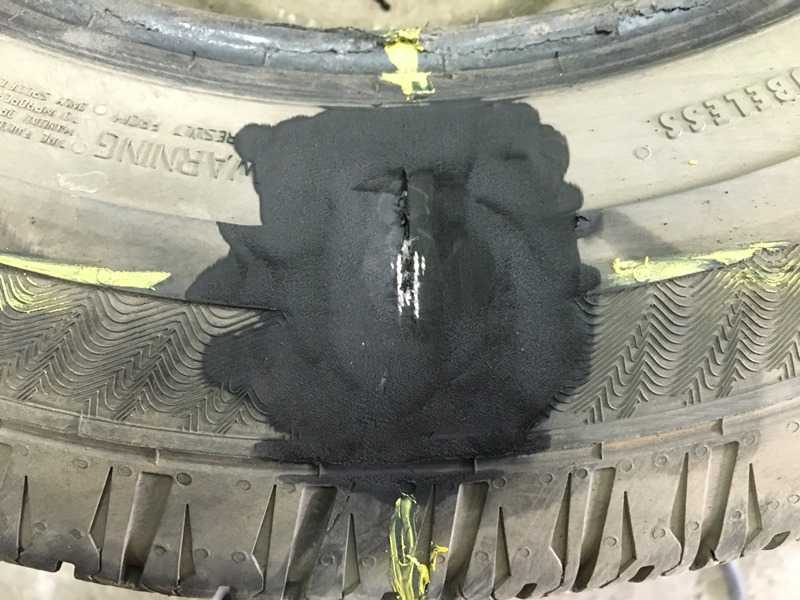 All-season tires are built to handle all kinds of conditions.
All-season tires are built to handle all kinds of conditions.
Summer tires: These are often considered high-performance tires, feature large blocks of tread that are stiff with wide grooves to expel water; the rubber is designed for warm weather.
Winter or snow tires: These feature softer rubber and tread which produce adequate grip in low temperatures with tread patterns that grip into snow; often feature thin cuts known as sipes that crisscrosses the blocks of tread to further enhance grip.
All-season tires: This kind of tire has medium-sized blocks of tread with some sipes and a rubber that fits a range of temperatures.
A tire holds air to give it the correct shape and firmness to carry a vehicle down the road. The amount of air inside the tire is measured by the amount of pressure per square inch or designated as psi. This number comes from the part of the tire that comes in contact with the road, or the contact patch. It is the portion of the tire that is not completely round.
It is the portion of the tire that is not completely round.
A tire that is properly inflated will look almost round while one that is under-inflated will appear flatter. The number of psi that must be maintained in the tire is what is required for the contact patch to be at the correct size.
A tire that is over or under-inflated is at a higher risk of damage. It also lessens the stability of the vehicle when traveling. For example, a tire with too much air won’t have enough contact with the road and will be more likely to spin or lose control, especially in adverse road conditions.
The tires must carry the vehicle along the road, but it requires so much force exerted by the vehicle to accomplish this task. The power required comes from the weight of the vehicle and the speed it is going. The tires require a lot of friction to force them to move. That amount of friction is impacted by the weight of the vehicle, which creates a coefficient of rolling friction.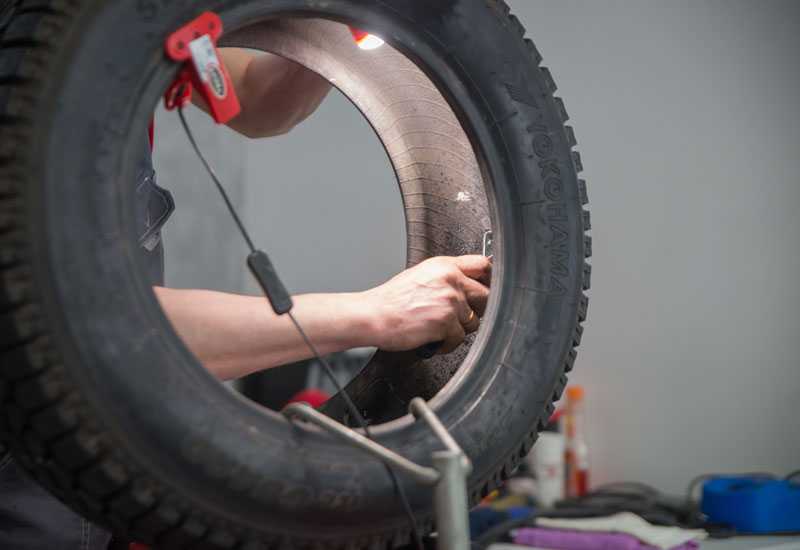 For an average tire, the coefficient of rolling friction or CRF is 0.015, which is multiplied by the weight of the vehicle.
For an average tire, the coefficient of rolling friction or CRF is 0.015, which is multiplied by the weight of the vehicle.
The tire generates heat because of the friction with a higher heat buildup when more force is required to move the vehicle along. The amount of heat also depends on the firmness of the surface. Asphalt creates more heat on the tire while soft surfaces like sand build up less heat. On the other hand, the CRF increases on soft surfaces because it takes more power to move the tires along.
Tires must be maintained to increase their life and wear. Tires that are overinflated wear more in the center of the tread while under-inflation causes them to wear along the outside of the tire. When tires are out of alignment, they wear unevenly, especially along the inside or outside. Worn areas are more susceptible to picking up sharp objects or getting holes in them when you run over sharp objects.
Tires that are badly worn may not be able to be repaired when they are flat.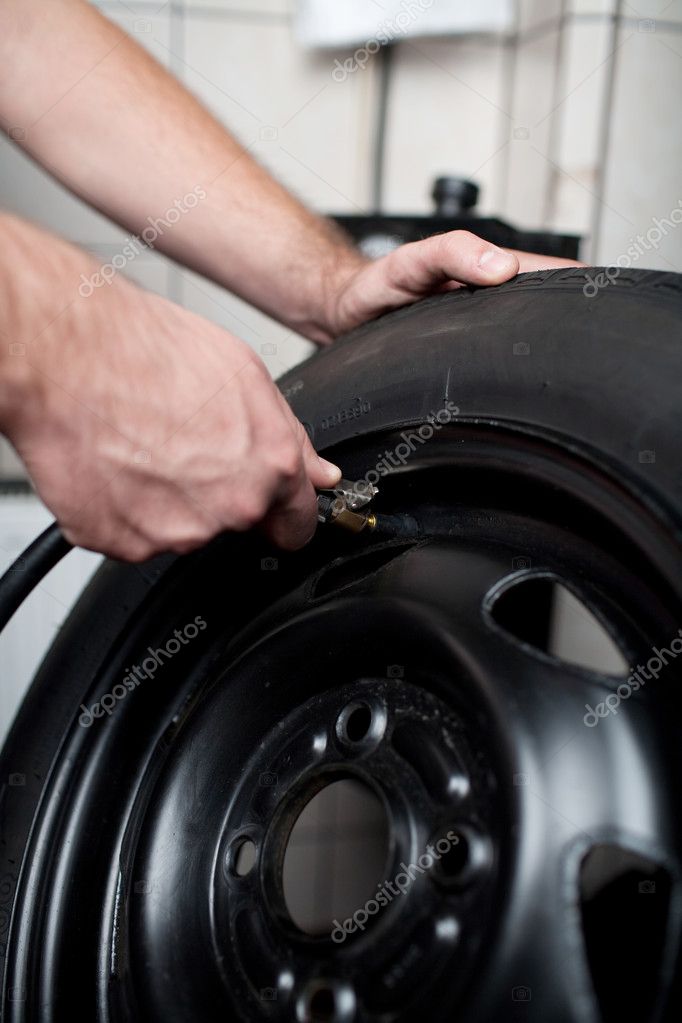 A certain amount of tread is required for the repair to be made. Another problem is when the steel belt breaks in a belted tire. It is no longer repairable and must be replaced.
A certain amount of tread is required for the repair to be made. Another problem is when the steel belt breaks in a belted tire. It is no longer repairable and must be replaced.
Tires come with various warranties based on how many miles they are expected to last. They can range from as low as 20,000 miles to upwards of 100,000 miles. The average tire will last between 40,000 and 60,000 miles if properly maintained. The life of a tire is directly affected by keeping it properly inflated, rotated as needed and the type of surface most often driven on.
The most popular service booked by readers of this article is Tire Rotation. YourMechanic’s technicians bring the dealership to you by performing this job at your home or office 7-days a week between 7AM-9PM. We currently cover over 2,000 cities and have 100k+ 5-star reviews... LEARN MORE
SEE PRICING & SCHEDULING
Tires
Traction Control
The statements expressed above are only for informational purposes and should be independently verified. Please see our terms of service for more details
Please see our terms of service for more details
4.2 Average Rating
Service Hours
7 AM - 9 PM
7 days a week
Phone Number
1 (855) 347-2779
Phone Hours
Mon - Fri / 6 AM - 5 PM PST
Sat - Sun / 7 AM - 4 PM PST
Address
We come to you at no extra charge
Guarantee
12-month/12,000-mile warranty
Our certified mobile mechanics perform over 600 services, including diagnostics, brakes, oil changes, scheduled mileage maintenances, and will come to you with all necessary parts and tools.
Get a fair & transparent quote instantly before booking.
(
1,055
)
SEE REVIEWS NEAR ME
21 years of experience
1068 reviews
Request Pardeep
Pardeep
21 years of experience
Request Pardeep
by Linda
Honda Civic L4-1.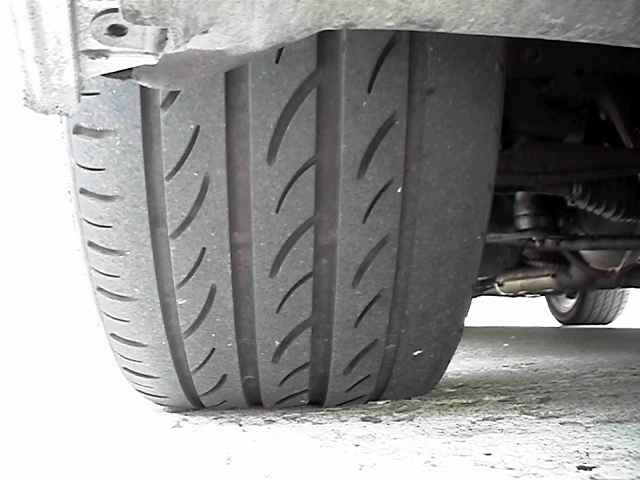 8L - Tire Rotation - San Jose, California
8L - Tire Rotation - San Jose, California
Pardeep was on time for the appt, actually early, and finished quickly and efficiently. Thank you very much.
by Ulysses
Toyota Prius - Tire Rotation - Fremont, California
Mr. Singh was on time, gave good advice and did the services very well. By the way, this is the third time I have my car serviced by him.
24 years of experience
244 reviews
Request Jermaine
Jermaine
24 years of experience
Request Jermaine
by Jessica
Toyota Corolla L4-1.8L - Tire Rotation - College Park, Maryland
Jermaine has been very timely with all his service visits, including this one. It's awesome to be able to trust someone to come home and work on my car.
by Harriet
Volvo 244 - Tire Rotation - Washington, District of Columbia
Jermaine is very professional and very respectful. He rotated the tires and changed the oil. He also gave me suggestions on what else I needed to have checked out on my car. .
.
16 years of experience
99 reviews
Request Jeffrey
Jeffrey
16 years of experience
Request Jeffrey
by Mary
Honda Accord L4-2.2L - Tire Rotation - Saint Petersburg, Florida
Jeffrey arrived when he said he would and was very efficient and neat. I asked for some advice about gasoline additives and he was most helpful.
36 years of experience
541 reviews
Request Rodney
Rodney
36 years of experience
Request Rodney
by Nicole
Nissan Xterra V6-4.0L - Tire Rotation - Sacramento, California
Rodney was prompt, professional, friendly, and very knowledgeable. I am always curious about learning how cars work and he was patient and open to answering my questions. Additionally, he provided educational insight and tips about the services he performed on my car.
Our certified mobile mechanics make house calls in over 2,000 U.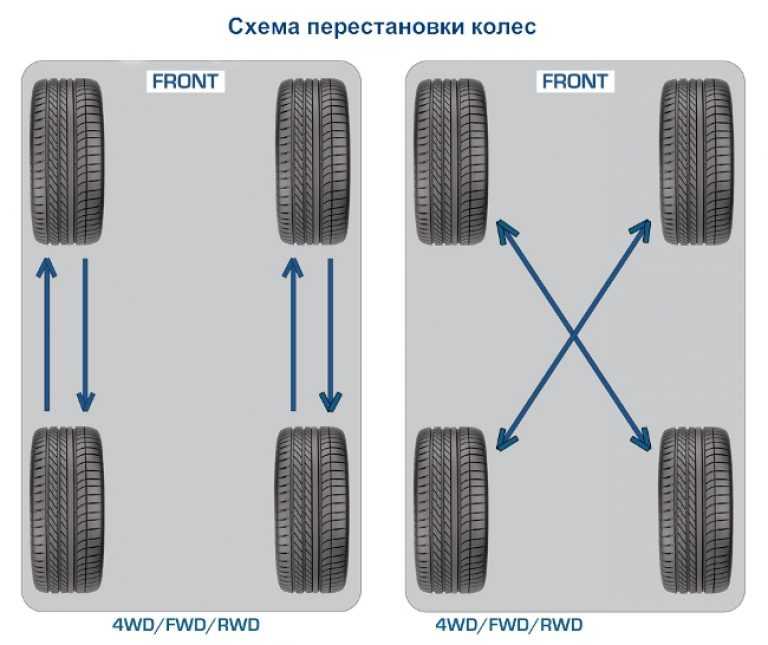 S. cities. Fast, free online quotes for your car repair.
S. cities. Fast, free online quotes for your car repair.
GET A QUOTE
GET A QUOTE
Is it Safe to Drive With a Flat Tire?
Once Once a tire loses a large amount of air pressure, it causes a flat tire. Overuse, puncture, improper air pressure, or a defect can cause a tire to become flat. Furthermore, driving on underinflated tires can cause damage and...
How to Maintain and Protect Your Tires
Car tires are important to staying safe on the road. Check your tire pressure or if there is any dry rot or cracking to make your tires last longer.
How to Replace a Yaw Rate Sensor
Yaw rate sensors monitor traction, stability, and the anti-lock braking system to alert you when the car tilts at an unsafe degree.
Uneven tire wear and excessive shaking in the steering wheel once hitting highway speeds.
Hi there, thanks for writing in. Based on your description of the symptoms and tire wear, it seems that your mechanic probably is correct. When the tie rod and ball joints (https://www.yourmechanic.com/article/symptoms-of-a-bad-or-failing-tie-rod-end) are damaged, they will cause the suspension to...
Bottome of vehicle makes a helicopter sound when driving at slow speeds
The sound you are hearing is related to the tires moving from what it sounds. The first thing to inspect is proper tire inflation. Tires make strange noises when they are low or damaged. Second needs to be the brakes....
I own a 2006 Cayman S. I brought it into the dealer for some concerns - please help me decide what to do
Hello - tire "speed range ratings" like "N" are for sustained speed at a specified load. If you participate in "track days" or other high-speed driving events, you would be wise to stick with an equivalent "N" rated tire, whether. ..
..
Cities
Services
Estimates
Our service team is available 7 days a week, Monday - Friday from 6 AM to 5 PM PST, Saturday - Sunday 7 AM - 4 PM PST.
1 (855) 347-2779 · [email protected]
Read FAQ
GET A QUOTE
Tires are an essential part of our car. While most people understand the basics of tires, like how to use the quarter trick to see if your tread is okay, we don’t give much thought to how tires actually work. Likewise, we know that there are different types of tires, like snow tires and all-weather, but most people couldn’t really tell you the real differences between the two. So how exactly do tires work?
Tire tread is one of the most important factors of the tire, and driving without tread can be particularly dangerous. The contact patch is the area of the tread where the tire itself meets the pavement. As your car accelerates, turns, or slows down, the physical forces acting upon your tire mean that it must contour and move.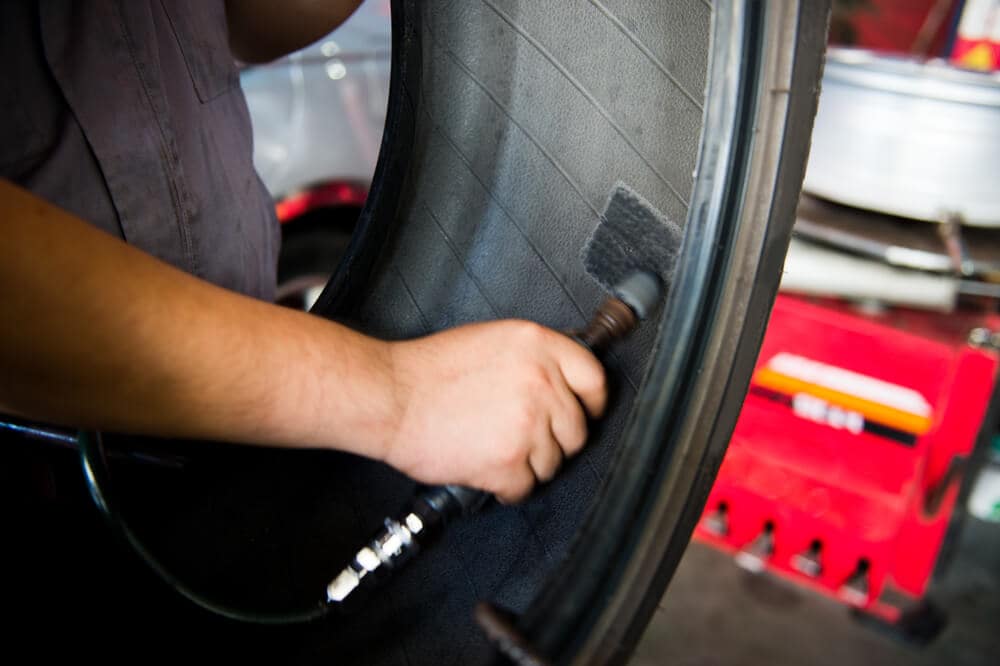 Tires must provide enough friction for your car to begin moving when you accelerate, as they are your car’s only points of contact with the road.
Tires must provide enough friction for your car to begin moving when you accelerate, as they are your car’s only points of contact with the road.
When you look at a car that has a wide profile or low profile tires, you probably make an assessment of how it looks on the car aesthetically. Contrary to what you might believe, however, tires are more than just molded rubber. The frame of the tire can be comprised of a number of materials, like steel or polyester. This layer of the frame is called the belt, and it must be rigid enough to support the shape of the tire but malleable enough to help the car drive over imperfections in the road.
Pile of tires | Liam McBurney/PA Images via Getty ImagesRELATED: Are More Expensive Tires Actually Better?
If you go online to read reviews about cars, you probably hear about ride quality quite a bit. For luxury cars, you expect a smooth, comfortable ride, and for lower-end cars, you might expect to feel potholes a bit more. There are a lot of factors that come into play when referring to a car’s ride quality, and you might be surprised to learn that tires are a big part of that. While a car’s suspension can help tremendously, the difference in wheels and tires does as well.
For luxury cars, you expect a smooth, comfortable ride, and for lower-end cars, you might expect to feel potholes a bit more. There are a lot of factors that come into play when referring to a car’s ride quality, and you might be surprised to learn that tires are a big part of that. While a car’s suspension can help tremendously, the difference in wheels and tires does as well.
As CNET explains, lower-profile tires are a hot trend for sports cars, and they do give your car a performance edge as they grip the road better under radial and lateral forces like cornering. However, these stiffer tires can make your ride less comfortable, causing you to feel more of the road, potholes and all.
Run flat tires | STORMI GREENER/Star Tribune via Getty ImagesRELATED: Why is the Michelin Tire Mascot White?
Believe it or not, there is a lot of engineering and time that goes into designing tires. While we typically look at the name brands when making a decision, our choice of tire can affect a lot more than just our car’s ability to drive safely.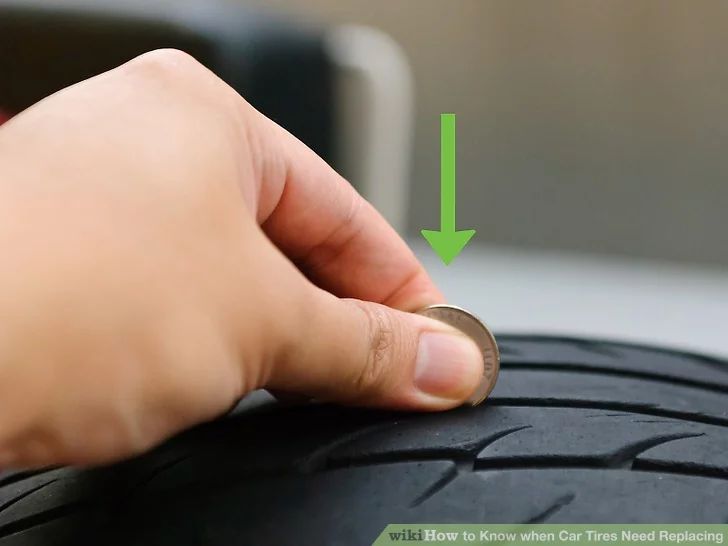
Let's talk about the structure and arrangement of a car wheel. What is a wheel and what is a tire. What is the difference between a radial tire and a diagonal tire? Information for novice motorists and dummies.
Wheels provide movement by converting rotation into translational motion of the machine. They perceive and smooth out impacts from bumps on the road surface. Controllability, stability and smoothness depend on them.
According to the purpose, the wheels of the car are divided into driving, driven, driven and combined (simultaneously driving and driven). The wheel consists of:
 Coincidence of cones of nuts and holes on disks provides exact installation of wheels;
Coincidence of cones of nuts and holes on disks provides exact installation of wheels; Car wheel device: 1 - wheel disk, 2 - rim, 3 - bead, 4 - chamber, 5 - sidewall, 6 - cord, 7 - protector.
It is chambered or tubeless. In the chamber there is a rubber chamber filled with air. A tire without a tube is called a tire. The tire consists of a carcass (cord) and tread, as well as sidewalls and beads.
The carcass is the main part of the tire, its power base. It is made of several layers of special fabric - cord. It perceives the pressure of compressed air from the inside and the load from the road outside. Cord material can be: cotton, metal wire, nylon, fiberglass and other materials.
The optimal solution is a breaker with cords twisted from thin steel wires. Compared to textile, this cord has many times less stretch. But there are disadvantages: it is less tolerant of loads on low-frequency coverage. If, during a tire puncture, water enters the breaker, especially with chemicals, it quickly collapses from corrosion. An alternative is the use of synthetics, which has the advantages of textile threads, but is devoid of the disadvantages of steel rods.
If, during a tire puncture, water enters the breaker, especially with chemicals, it quickly collapses from corrosion. An alternative is the use of synthetics, which has the advantages of textile threads, but is devoid of the disadvantages of steel rods.
The tread (treadmill) is a thick layer of rubber with a specific pattern. It is located on the outer surface of the tire and is in direct contact with the road surface. The tread pattern can be for good roads (use a small pattern), universal and special for off-road (large tread pattern). In winter, spikes are used in the tread.
A tubeless tire does not have an air bladder. The cavity between the tire and the rim is sealed, because directly filled with air. Therefore, the disk of a tubeless tire differs from the usual one by the presence of sealing beads (bead ring) on the rim. If you use tires with a chamber, then any discs will do, the beads will not interfere.
In diagonal tires , the cords are crossed, the angle of inclination is 35 - 38 °. They connect the sidewalls of the tire diagonally. Such tires are found only for trucks and special equipment.
They connect the sidewalls of the tire diagonally. Such tires are found only for trucks and special equipment.
In radial tires , the cords are at right angles to the beads. The main advantages are: good grip, low rolling resistance and long service life. Radial tires are more modern than diagonal tires. They are used on modern cars. With them, the car is more stable on the road, more economical and more dynamic.
In order for the tread to hold the road well, it must adapt to its unevenness - be flexible enough. What the frame cord almost does not interfere with. But the deformation of the sidewall of the tire is not desirable - it worsens the control of the car.
To solve this problem, an additional power ring of several layers of cord is used. It is called a breaker, it does not allow strong deformations in the lateral direction. In order for the breaker to have the necessary rigidity, the threads in it are not laid radially, but diagonally.
On the sidewall of the tire, you can see the inscription 185/60 R15. This means:
The mistake of many motorists is the delusion that the letter R in the marking indicates the radius. This letter has nothing to do with the number 15. She indicates that this rubber is of a radial design, in contrast to the obsolete diagonal ones. And the number 15 is the landing diameter along the rim of the wheel. 15 inches = 381 mm.
A tube tire for a passenger car consists of a tire and a tube with a valve fitted with a cap or key cap.
The chamber is an annular closed rubber tube with a rubber-metal valve.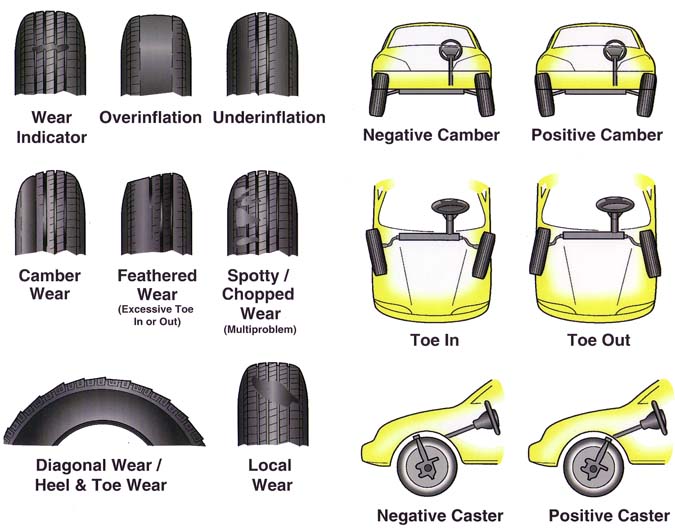 It is made of elastic rubber and serves only to hold compressed air.
It is made of elastic rubber and serves only to hold compressed air.
Chambers operate under severe conditions, experiencing alternating deformations at high temperatures. Therefore, rubber for cameras should be airtight, elastic, resistant to thermal aging, not change their physical and mechanical properties at different ambient temperatures. The size of the chamber must strictly correspond to the size of the tire with which it is completed.
If we're talking about passenger car tires, tube tires are now a thing of the past. Foreign manufacturers have abandoned tubes, and now only tubeless tires are on the market. Cameras can be seen on domestic tire models, but not on all. Everything goes to the fact that cameras will soon become history.
A tubeless tire differs from a conventional one - it has a sealing layer 1.5...2.0 mm thick, which is vulcanized to its inner surface. It is made from a mixture of natural and synthetic rubbers with reduced gas permeability.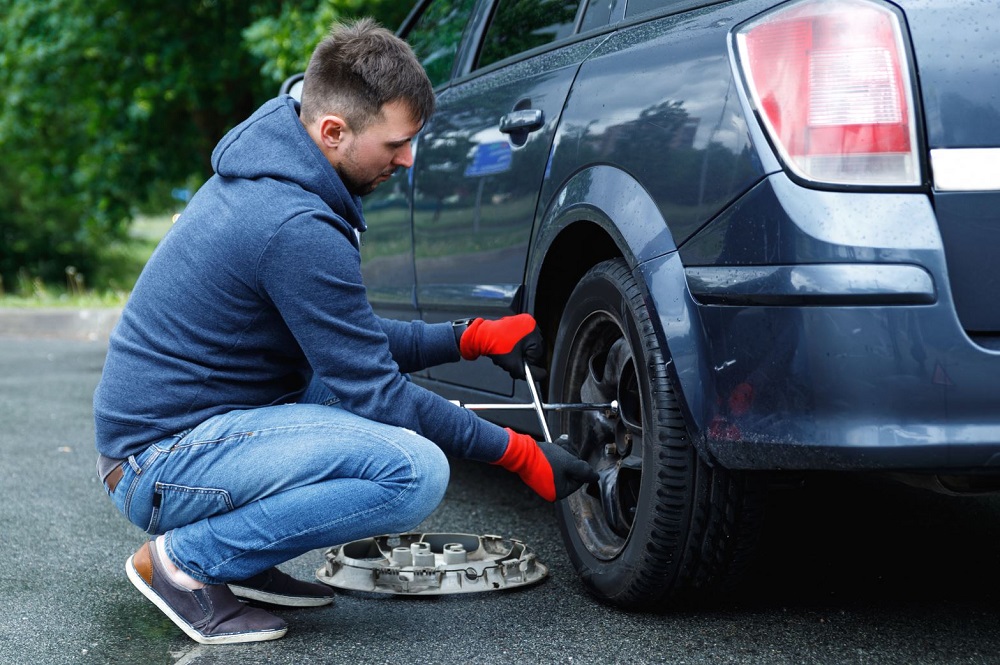
The tire beads are provided with a sealing rubber layer, which provides the necessary tightness in the area of the beads landing on the wheel rim shelves. This is facilitated by the special design of the tire beads, designed to increase the angle of inclination of the toe of the bead and the increased tightness of the beads on the landing shelves of the rim.
For tubeless tires, plug-in rubber-to-metal valves (fig.
Advantages of tubeless tires:
The main advantages of tubeless tires compared to tube tires are:
Attention:
At the same time, the use of tubeless tires requires careful mounting and dismantling.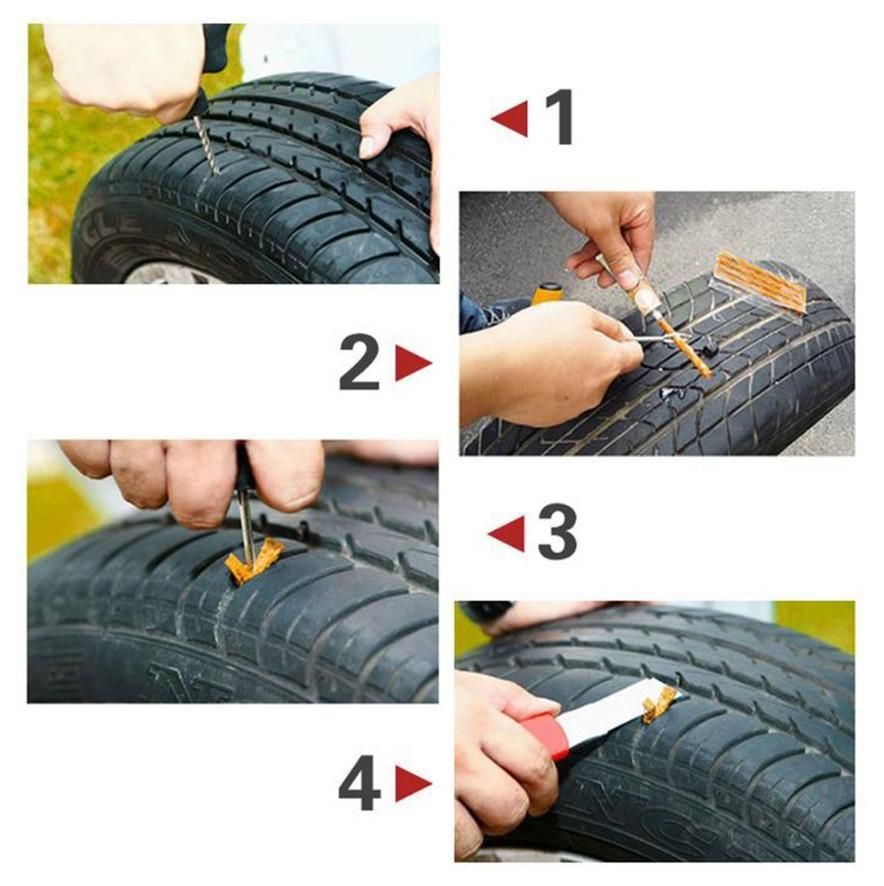 Damage to the bead flanges, especially steel ones, can lead to depressurization of a tubeless tire. If a tire is damaged, it must be repaired by specialists using equipment designed for this purpose.
Damage to the bead flanges, especially steel ones, can lead to depressurization of a tubeless tire. If a tire is damaged, it must be repaired by specialists using equipment designed for this purpose.
In case of loss of pressure, do not drive with a flat tire. this will destroy the hermetic layer.
The tube is not inserted into the tubeless tyre. At first glance, you increase the strength of the tire, in fact, an air cushion is formed between the chamber and the pressure layer, contributing to the destruction of the latter. If the load on the wheel is increased (for example: a sharp turn), the wheel may break.
There are complaints about tubeless tires due to weak sidewalls. I would like to say that this is not so. There are no perfect tires. The manufacturer seeks from the tire not only durability, but also comfort when driving. It is the softness of the sidewall that gives a feeling of smoothness in movement. Having made a rigid sidewall, we will be able to jump on curbs and sewer wells on our car; when driving on a flat and good road, we will feel uncomfortable.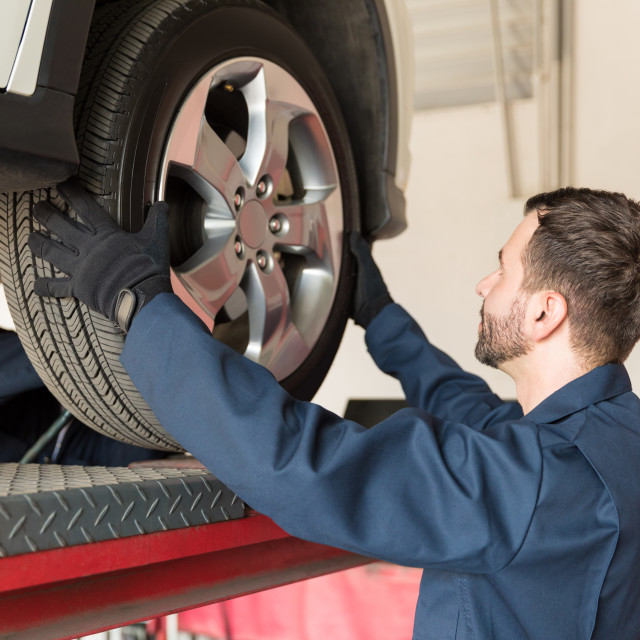
| Tire labels - how to read? From November 1, 2012, tires sold in countries within the European Union must have special stickers. They contain information, in particular, on the fuel.. July 11, 2022, 11:34 | |
| Causes of tire wear Tire wear is often the result of too much speed at which we move. However, there are many more factors influencing this process. Tire condition during .. 04 July 2022, 11:58 | |
| What is the minimum tread depth allowed? The tread of a tire is sometimes analyzed in terms of appearance and shape, modern technologies implemented by the manufacturer, or performance in winter conditions. However, the key parameter of tires in.. June 23, 2022, 10:06 | |
Tire deformation and side ties. | |